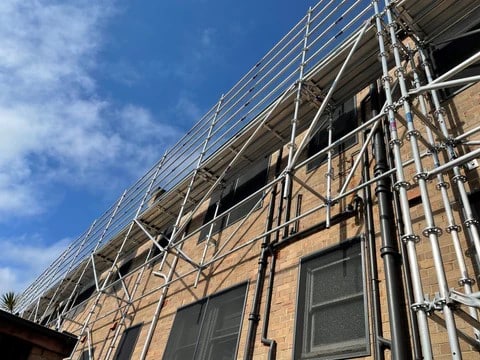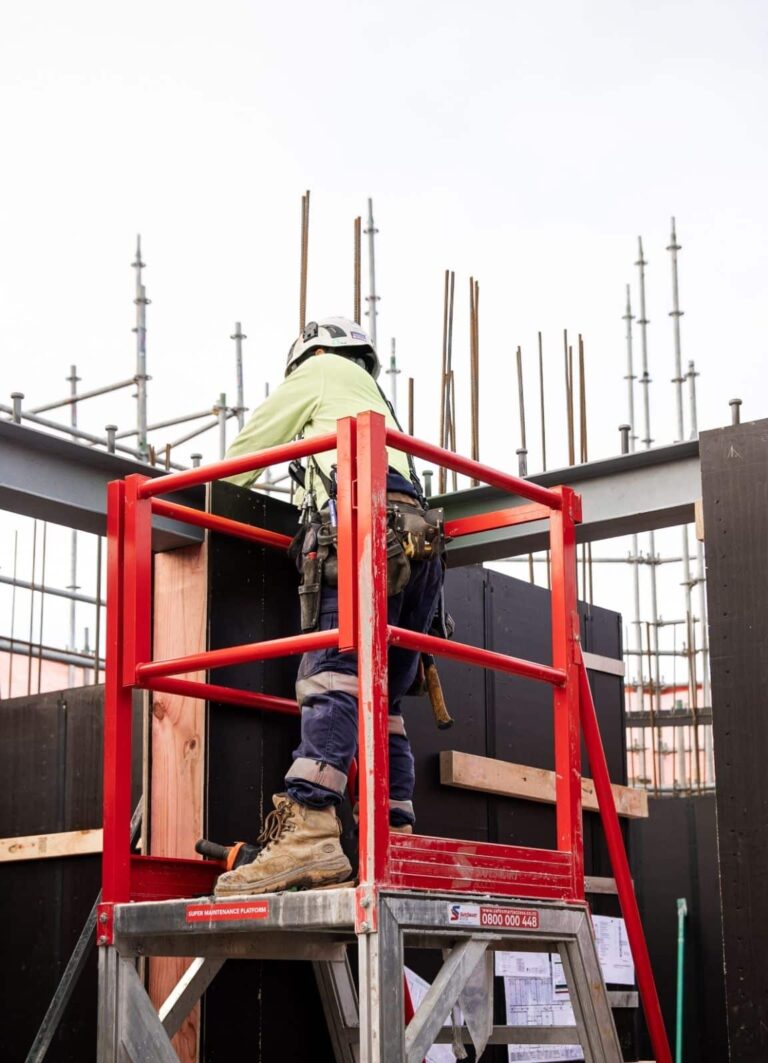What is cantilevered Scaffolding?
Cantilevered scaffolding is used in construction projects where work needs to be carried out on the side of a building or structure. Unlike traditional scaffolding systems, cantilevered scaffolding is supported on one end and projects horizontally from the building or structure. This type of scaffolding is anchored to the building or structure at one end and supported by needles or struts, providing access to difficult-to-reach areas such as the sides of buildings or structures.
In this blog, we will focus on cantilevered scaffolding, discussing its benefits, applications, and safety measures to be followed while using it.

Got an upcoming project that requires cantilevered scaffolding?
We offer comprehensive scaffold design services in conjunction with our highly engineered Proscaf system. Talk to us about your upcoming project.
Common Applications of Cantilever Scaffolding
Façade maintenance: Cantilevered scaffolding is commonly used in building maintenance and cleaning projects, where access to the façade is required.
Bridge construction: Cantilevered scaffolding is used in bridge construction projects to provide support to workers during the construction process.
Window installation: Cantilevered scaffolding is used in window installation projects, where access to the outside of the building is required.
Proscaf Capabilities for Cantilevered Scaffolding
- The biggest advantage of Proscaf over other systems for cantilevered scaffolding is the load bearing cross-braces. Proscaf braces have industry high compression load ratings. This is achieved through a variety of factors including the high-grade steel Proscaf Steel is constructed from. Load bearing braces allow for cantilevered or suspended bays to be progressively installed, safely from behind guardrails.
- The higher capacity of braces and other components allows for larger cantilevered spans without non-system components being used for support. With specific data on Proscaf braces, engineers can create cantilevered scaffold designs that are safe but not over-engineered designs that use more components than required.
- The high capacity of the double-bolt standards, along with the load-bearing braces and node-to-node connection, means that with Proscaf large, suspended scaffold structures can be built without the requirement of additional material. No splicing or support beams needed!
- Rated harness attachment points are used as an added safeguard to ensure user safety.
- In design, all scaffolds are inherently crane liftable – building at ground level and lifting modules into position can reduce cost and minimise working at height risk.
- Proscaf also has pre-engineered and tested components like cantilever brackets. These components allow for cantilevered scaffold bays and are all part of the Proscaf system.


Need a Scaffold design?
We offer a design service for projects using our Proscaf Scaffolding System. Get in touch to find out more.
Importance of a Good Cantilevered Scaffold Design
Building a cantilevered scaffold requires much more engineering and design than standard facade scaffolding. We strongly recommend working with a professional scaffold engineer before constructing a cantilevered scaffold.
The design of a cantilevered scaffold should consider factors such as the intended use, load capacity, and the conditions at the work site. The scaffold must be designed to support the weight of the workers, tools, and materials required for the job. The design should also take into account the environmental conditions, such as wind, rain, or snow, which can all put adverse stress on the scaffold.
Furthermore, the design of a cantilevered scaffold should ensure that the scaffold is securely anchored to the building or structure to prevent movement or collapse. The anchoring points must be inspected regularly for any signs of damage or wear and repaired or replaced as necessary.
The design of a cantilevered scaffold should also incorporate safety features such as guardrails, toeboards, and safety nets to prevent falls and protect workers from injury. The safety features must be designed and installed in compliance with relevant safety standards and regulations.
Our design capabilities:
At SafeSmart NZ we are often working with Scaffolders to put together cost-effective cantilevered scaffold designs that are engineered to specific site conditions. If you have a complex project that may require a cantilevered scaffold, contact us to use Proscaf and we can put together state of the art scaffold designs that are specifically designed around the industry leading capabilities of the Proscaf system.
Cantilevered Scaffold Safety Measures:
- Proper training: Workers should receive proper training in the use of cantilevered scaffolding systems, including the correct erection and dismantling procedures.
- Secure anchoring: The scaffold should be securely anchored to the building or structure, and the anchoring points should be regularly inspected for any signs of damage or wear.
- Load capacity: The scaffold should be designed and constructed to support the anticipated load capacity, and the workers should not overload the scaffold.
- Fall protection: Workers should wear appropriate fall protection equipment, such as safety harnesses, when working on cantilevered scaffolding.
- Regular inspection: The scaffold should be regularly inspected for any signs of damage or wear, and any defects should be promptly addressed.

If you would like to discuss cantilevered scaffolding and other technical scaffolding structures, we would be happy to have a chat: 0800 000 448.





